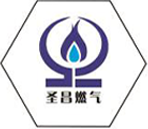
Dec . 04, 2024 16:25
Back to list
Gas Pressure Reduction Device for Efficient Energy Management
Understanding Gas Pressure Regulators Key Components and Functionality
Gas pressure regulators are essential devices used across various industries and applications to manage and control the pressure of gas. Whether in residential settings for natural gas supply, in industrial operations, or in specialized applications like medical gas delivery, these devices ensure that gases are delivered at a safe and usable pressure. In this article, we will explore the fundamental principles behind gas pressure regulators, their components, applications, and the importance of maintaining proper gas pressure control.
What is a Gas Pressure Regulator?
At its core, a gas pressure regulator is a mechanical device that reduces the pressure of gas from a high-pressure source to a lower, usable pressure. This reduction in pressure is crucial for the safety and efficiency of various systems. Regulators can make a significant difference in operational stability, equipment lifespan, and safety.
How Do Gas Pressure Regulators Work?
Gas pressure regulators operate on a principle known as “pressure drop.” When gas flows through the regulator, its pressure decreases from the inlet to the outlet. The regulator consists of multiple components that work together to maintain a consistent outlet pressure, regardless of fluctuations in the inlet pressure or variations in the gas flow rate.
1. Diaphragm The diaphragm is a flexible membrane within the regulator that responds to changes in pressure. When the inlet pressure rises, the diaphragm moves to reduce the gas flow, while a drop in pressure causes it to open up, allowing more gas to pass through.
2. Spring A spring is used to provide the necessary force to keep the diaphragm in place, thus controlling the outlet pressure. Adjustments to the spring tension allow users to set the desired pressure for the specific application.
3. Seat and Orifice The gas flows through a seat and orifice, which together control the amount of gas that can pass through the regulator. Smaller orifices restrict gas flow, while larger ones allow more gas to flow, influencing the outlet pressure.
.
Gas pressure regulators find applications in various sectors
مخفض ضغط الغاز

- Residential and Commercial Many homes and businesses use natural gas for heating, cooking, and hot water. Regulators ensure that gas is delivered at a safe, consistent pressure, preventing dangerous leaks or equipment damage.
- Industrial In manufacturing and processing facilities, precise gas control is critical for complex machinery and processes. Regulators help ensure that fuel gases, such as propane or hydrogen, are delivered at the correct pressure for optimal performance.
- Medical In the healthcare sector, medical gas regulators are essential for delivering gases like oxygen and nitrous oxide at regulated pressures, ensuring patient safety during treatments and surgeries.
Importance of Proper Gas Pressure Control
Maintaining proper gas pressure is crucial for several reasons
1. Safety High-pressure gas can lead to dangerous leaks or explosions. Regulators help mitigate these risks by ensuring that gas is delivered at a safe pressure.
2. Efficiency Proper pressure control enhances the efficiency of appliances and equipment. For instance, a gas stove requires a specific pressure for optimal combustion; incorrect pressure can lead to increased fuel consumption and incomplete combustion.
3. Equipment Longevity Consistent and appropriate gas pressure helps extend the life of equipment. Over time, exposure to high-pressure gas can cause wear and tear, leading to malfunctions and costly repairs.
4. Regulatory Compliance Many industries must adhere to strict safety and operational standards. Using gas pressure regulators ensures compliance with these regulations, minimizing the risk of fines or legal issues.
Conclusion
Gas pressure regulators are critical devices that serve to enhance safety, efficiency, and reliability across numerous applications. By understanding their workings and significance, users can better appreciate the necessity of these devices in everyday life and industry. Regular maintenance and calibration of gas pressure regulators are vital to ensure they function correctly, safeguarding both people and property from potential hazards associated with gas systems. With the proper application, these regulators not only optimize performance but also promote a safer environment for all.
Latest news
-
Safety Valve Spring-Loaded Design Overpressure ProtectionNewsJul.25,2025
-
Precision Voltage Regulator AC5 Accuracy Grade PerformanceNewsJul.25,2025
-
Natural Gas Pressure Regulating Skid Industrial Pipeline ApplicationsNewsJul.25,2025
-
Natural Gas Filter Stainless Steel Mesh Element DesignNewsJul.25,2025
-
Gas Pressure Regulator Valve Direct-Acting Spring-Loaded DesignNewsJul.25,2025
-
Decompression Equipment Multi-Stage Heat Exchange System DesignNewsJul.25,2025

